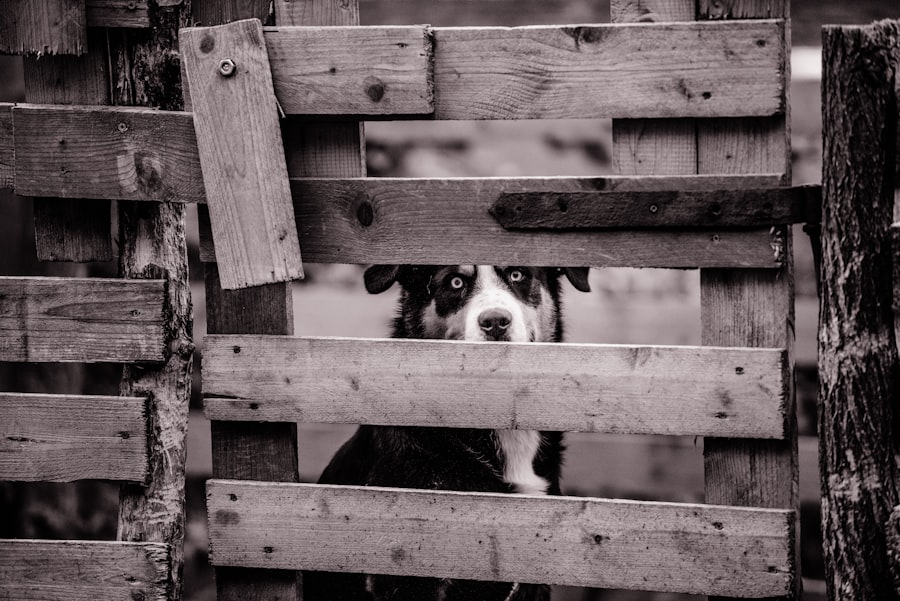Gardens are valuable assets for homeowners, providing beauty and enjoyment. However, they can be vulnerable to damage from animals and pests. Installing a garden fence is an effective method for protecting plants from these intruders.
A well-constructed fence not only serves as a barrier but can also enhance the visual appeal of the outdoor space. Selecting appropriate materials, designing, constructing, and maintaining a garden fence are essential steps to ensure its effectiveness. These aspects require careful consideration to create a fence that fulfills its protective function while complementing the garden’s aesthetics.
This article will discuss the key elements of building and maintaining a garden fence, including material selection, design considerations, construction techniques, and ongoing maintenance. Additionally, it will provide specific strategies for preventing chickens from entering and damaging garden areas.
Table of Contents
- 1 Choosing the Right Materials for Your Garden Fence
- 2 Designing and Building Your Garden Fence
- 3 Installing the Garden Fence
- 4 Maintaining Your Garden Fence
- 5 Additional Tips for Keeping Chickens Out of Your Garden
- 6 Conclusion and Final Thoughts
- 7 FAQs
- 7.1 What materials are commonly used to make a garden fence to keep chickens out?
- 7.2 What height should a garden fence be to keep chickens out?
- 7.3 How deep should the fence be buried to keep chickens from digging under it?
- 7.4 Are there any specific design considerations for a garden fence to keep chickens out?
- 7.5 Are there any legal considerations when building a garden fence to keep chickens out?
Key Takeaways
- Choosing the right materials for your garden fence is crucial for its durability and effectiveness.
- When designing and building your garden fence, consider the aesthetics and functionality of the fence.
- Proper installation of the garden fence is essential for its stability and longevity.
- Regular maintenance of your garden fence is necessary to ensure its continued effectiveness.
- Additional tips for keeping chickens out of your garden include using chicken wire and creating barriers.
Choosing the Right Materials for Your Garden Fence
Natural and Versatile Options
Wood is a popular choice for garden fences due to its natural look and versatility. Cedar and redwood are particularly popular choices for their natural resistance to rot and insects.
Low-Maintenance and Durable Alternatives
Another option is vinyl, which is low-maintenance and comes in a variety of styles and colors. Metal fences, such as aluminum or wrought iron, are also durable options that can add a touch of elegance to your garden. For a more eco-friendly option, consider using bamboo or recycled materials for your garden fence.
Climate and Maintenance Considerations
Ultimately, the right material for your garden fence will depend on your budget, personal preference, and the specific needs of your garden. When choosing the right materials for your garden fence, it’s important to consider the climate and weather conditions in your area. If you live in an area with high humidity or frequent rain, you’ll want to choose materials that are resistant to rot and moisture damage. On the other hand, if you live in a dry climate, you’ll want to choose materials that can withstand prolonged exposure to sunlight and heat. Additionally, consider the level of maintenance required for each type of material. By carefully considering these factors, you can choose the right materials for your garden fence that will provide both functionality and aesthetic appeal.
Designing and Building Your Garden Fence

Once you’ve chosen the right materials for your garden fence, the next step is to design and build the fence. The design of your garden fence should complement the overall aesthetic of your outdoor space while also serving its practical purpose of keeping out unwanted visitors. Consider the height of the fence, as well as any additional features such as gates or decorative elements.
The layout of your garden and the specific areas you want to protect will also influence the design of your fence. For example, if you have a vegetable garden that you want to protect from animals, you may need a taller fence with smaller gaps between the panels. When it comes to building your garden fence, it’s important to ensure that it is structurally sound and properly installed.
If you’re building a wooden fence, make sure to use pressure-treated lumber or apply a protective sealant to prevent rot and insect damage. Properly set the posts in concrete to ensure stability and longevity. If you’re building a metal or vinyl fence, follow the manufacturer’s instructions for installation to ensure that it is properly secured and will withstand the elements.
Consider hiring a professional if you’re not confident in your ability to build the fence yourself. By carefully designing and building your garden fence, you can create a functional and visually appealing barrier that will protect your garden for years to come.
Installing the Garden Fence
Installing a garden fence requires careful planning and attention to detail to ensure that it is properly installed and will effectively serve its purpose. Before beginning the installation process, it’s important to check with local authorities to determine any zoning regulations or permits required for building a fence on your property. Additionally, it’s important to communicate with neighbors if the fence will be shared or close to property lines.
The first step in installing a garden fence is marking the boundaries where the fence will be placed. Use stakes and string to outline the perimeter of the fence, ensuring that it is straight and level. Next, dig holes for the fence posts at regular intervals along the perimeter, making sure they are deep enough to provide stability for the fence.
Depending on the type of material used for the fence, such as wood or metal, different methods may be required for securing the posts in place. Once the posts are set in place, it’s time to install the panels or pickets of the fence. This step requires precision and attention to detail to ensure that each panel is properly aligned and secured to the posts.
If gates are included in the design of the fence, they should be installed at this stage as well. Finally, add any finishing touches such as decorative elements or post caps to complete the installation process. By following these steps and paying attention to detail, you can ensure that your garden fence is properly installed and will effectively protect your outdoor space.
Maintaining Your Garden Fence
After installing your garden fence, it’s important to establish a regular maintenance routine to ensure that it remains in good condition and continues to serve its purpose effectively. The specific maintenance requirements will depend on the type of material used for the fence, as well as the climate and weather conditions in your area. For wooden fences, regular maintenance may include staining or sealing every few years to protect against moisture damage and UV exposure.
Additionally, inspect the fence periodically for any signs of rot or insect damage, and make any necessary repairs promptly. Metal fences may require occasional cleaning with a mild detergent and water to remove dirt and debris, as well as inspection for any signs of rust or corrosion. Vinyl fences are relatively low-maintenance but may benefit from occasional cleaning with a mild detergent and water to remove dirt and maintain their appearance.
In addition to regular maintenance, it’s important to address any issues with the fence promptly to prevent further damage or deterioration. This may include repairing loose or damaged panels, replacing broken hardware such as hinges or latches on gates, or addressing any signs of structural instability. By establishing a regular maintenance routine and addressing any issues promptly, you can ensure that your garden fence remains in good condition and continues to protect your outdoor space effectively.
Additional Tips for Keeping Chickens Out of Your Garden

Physical Barriers and Deterrents
In addition to building a garden fence, creating a barrier around your garden using chicken wire or hardware cloth buried several inches into the ground can prevent chickens from digging under the fence. You can also use deterrents such as motion-activated sprinklers or noise-making devices near the garden to discourage chickens from entering the area.
Providing Alternative Areas for Chickens
Another effective strategy is to provide alternative areas for chickens to roam and forage away from your garden. This may include creating designated free-range areas or providing supplemental feed in a separate location to reduce their interest in entering the garden. Planting chicken-friendly vegetation such as clover or grass in areas where chickens are allowed to roam freely can further reduce their interest in entering the garden.
Working with Neighbors
Finally, consider working with your neighbors if they also have chickens that may be causing issues in your garden. By communicating with them about potential solutions such as shared fencing or coop placement, you can work together to address the issue effectively.
Conclusion and Final Thoughts
In conclusion, building a garden fence is an effective way to protect your outdoor space from unwanted visitors such as animals and pests while also adding aesthetic appeal to your property. By carefully choosing the right materials, designing and building the fence properly, installing it with attention to detail, maintaining it regularly, and implementing additional tips for specific issues such as keeping chickens out of your garden, you can ensure that your garden fence serves its purpose effectively for years to come. Whether you’re looking to protect a vegetable garden from wildlife or create a safe space for children and pets to play outdoors, a well-designed and properly maintained garden fence can provide peace of mind and enhance the beauty of your outdoor space.
If you’re looking to keep chickens out of your garden, you may also be interested in learning how to insulate a chicken coop to keep your feathered friends warm during the colder months. Check out this helpful article on how to insulate a chicken coop for some valuable tips and tricks.
FAQs
What materials are commonly used to make a garden fence to keep chickens out?
Common materials used for making a garden fence to keep chickens out include wood, metal, PVC, and wire mesh.
What height should a garden fence be to keep chickens out?
A garden fence to keep chickens out should be at least 6 feet tall to prevent them from flying over it.
How deep should the fence be buried to keep chickens from digging under it?
To prevent chickens from digging under the fence, it should be buried at least 12 inches deep.
Are there any specific design considerations for a garden fence to keep chickens out?
The design of the fence should include a secure gate and be constructed with no gaps or openings that chickens could squeeze through.
Are there any legal considerations when building a garden fence to keep chickens out?
It’s important to check local zoning laws and regulations before building a garden fence, as there may be restrictions on fence height and materials.
Meet Walter, the feathered-friend fanatic of Florida! Nestled in the sunshine state, Walter struts through life with his feathered companions, clucking his way to happiness. With a coop that’s fancier than a five-star hotel, he’s the Don Juan of the chicken world. When he’s not teaching his hens to do the cha-cha, you’ll find him in a heated debate with his prized rooster, Sir Clucks-a-Lot. Walter’s poultry passion is no yolk; he’s the sunny-side-up guy you never knew you needed in your flock of friends!







